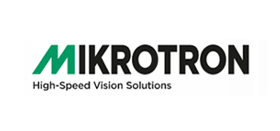Question 1: What makes color such an exciting topic?
Answer 1: We are seeing a growing demand for color cameras. This heightened interest is driven by new applications in which images are no longer used solely for computer-based analysis, but rather where the images must also be at a quality acceptable to the human eye. Furthermore, the additional color information in an image opens up more and more extensive and versatile possibilities for image processing and analysis.
Question 2: Why is it so complicated to produce good color images?
Answer 2: Because of the way technology works. A normal sensor only "sees" the intensity of the light, translating it into gray values. To obtain color images, you need at least three values for each pixel to capture the color information. These three values can be RGB for example, or a brightness value and two color values such as YUV, or a combination of Hue, Saturation and Brightness (known as HSB).
There are a variety of methods for obtaining these values. One option is to optically split the light by using prisms, channeling it onto three sensors that record the red, green and blue light portions respectively. Another method is the use of so-called Bayer patterns on each individual sensor: In this pattern, four pixels each have their own color filter mask, which extends periodically over the entire sensor in a chessboard-like pattern. 50 % of the sensor’s pixels are colored green, and 25% each of the remaining ones are colored red or blue, in alternating order per line. Almost all Basler ace models use the Bayer pattern for color recognition. The so-called debayering is then used to calculate the actual image at full sensor resolution from the raw image with one color information per pixel. This is done by interpolation with the help of a number of surrounding pixels, usually with a 2x2 or a 3x3 environment. However, since this is only an approximation to reality, errors can hardly be avoided. Typical examples of this include reduced sharpness and color errors on edges running diagonally or close to one another.
Question 3: What distinguishes color reproduction in Basler cameras?
Answer 3: Basler's newest ace models, as well as our dart and pulse cameras, include the powerful in-camera image optimization PGI. It consists of a unique combination of features, including 5x5 debayering, color anti-aliasing, denoising and improved sharpness. With just one click, PGI automatically improves a color image.
The Basler pylon Camera Software Suite also allows the configuration for hue and saturation along the six color axes red, green, blue, magenta, yellow and cyan with the "six-axis operator" patented by Basler. All ace modelsas well as the Basler beat and sprint are equipped with this feature. In particular, cameras with the latest CMOS sensors from ON Semiconductor and Sony will benefit from easier execution of complicated color tasks featuring the latest sensor technology.
Question 4: How do customers benefit from a Basler color camera?
Answer 4: "What you see is what you get" – our customers can rely on their properly calibrated Basler cameras to deliver precisely the color image they see with their own eyes.
Beyond this, our ace color cameras can also be adapted exactly to the requirements of the special application. This includes, for example, the option to highlight a specific color, or to shift certain colors into a different area to make them more visible. The Basler pylon Camera Software Suite keeps configuration quick and easy on all ace models. This opens up new possibilities for our customers to design their applications to fit their precise needs and to adjust their cameras to fit their color requirements. Another benefit is that the color reproduction of an entire new generation of color cameras can be adapted to fit the familiar color profile of older cameras.
Question 5: Which fields are seeing increased use of color cameras, and why?
Answer 5: The application areas for color cameras are almost more versatile than for monochrome cameras, as they can handle both, classic applications in factory automation like print or food inspection, as well as applications outside the factory. One example is in medical diagnostics, such as ophthalmology. Here, it is particularly important to reproduce colors exactly according to the requirements, in order to be able to draw the correct conclusions about possible disease patterns.
Intelligent traffic systems or sports analyses also require color images. Especially in these applications it is important that the camera produces a "nice" picture for the human eye. That’s where all Basler dart and pulse models, as well as ace cameras with Sony's IMX sensors and PYTHON sensors from ON Semiconductor, can shine particularly with our PGI feature set.
To Know More About Basler Machine Vision Camera in India, Contact Menzel Vision and Robotics Pvt Ltd at (+ 91) 22 35442505 or Email us at info@mvrpl.com
Source - baslerweb.com































